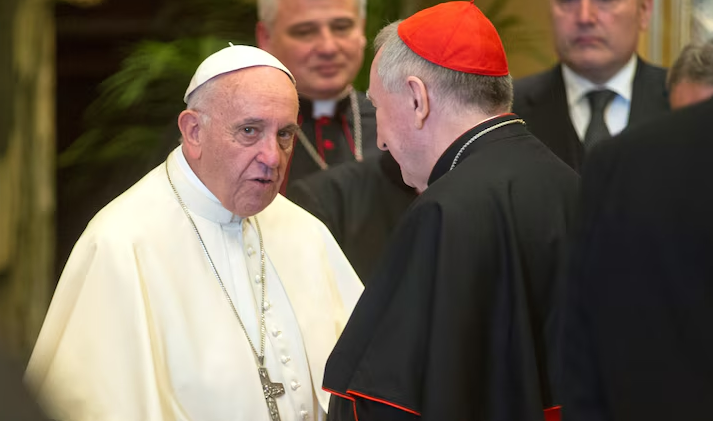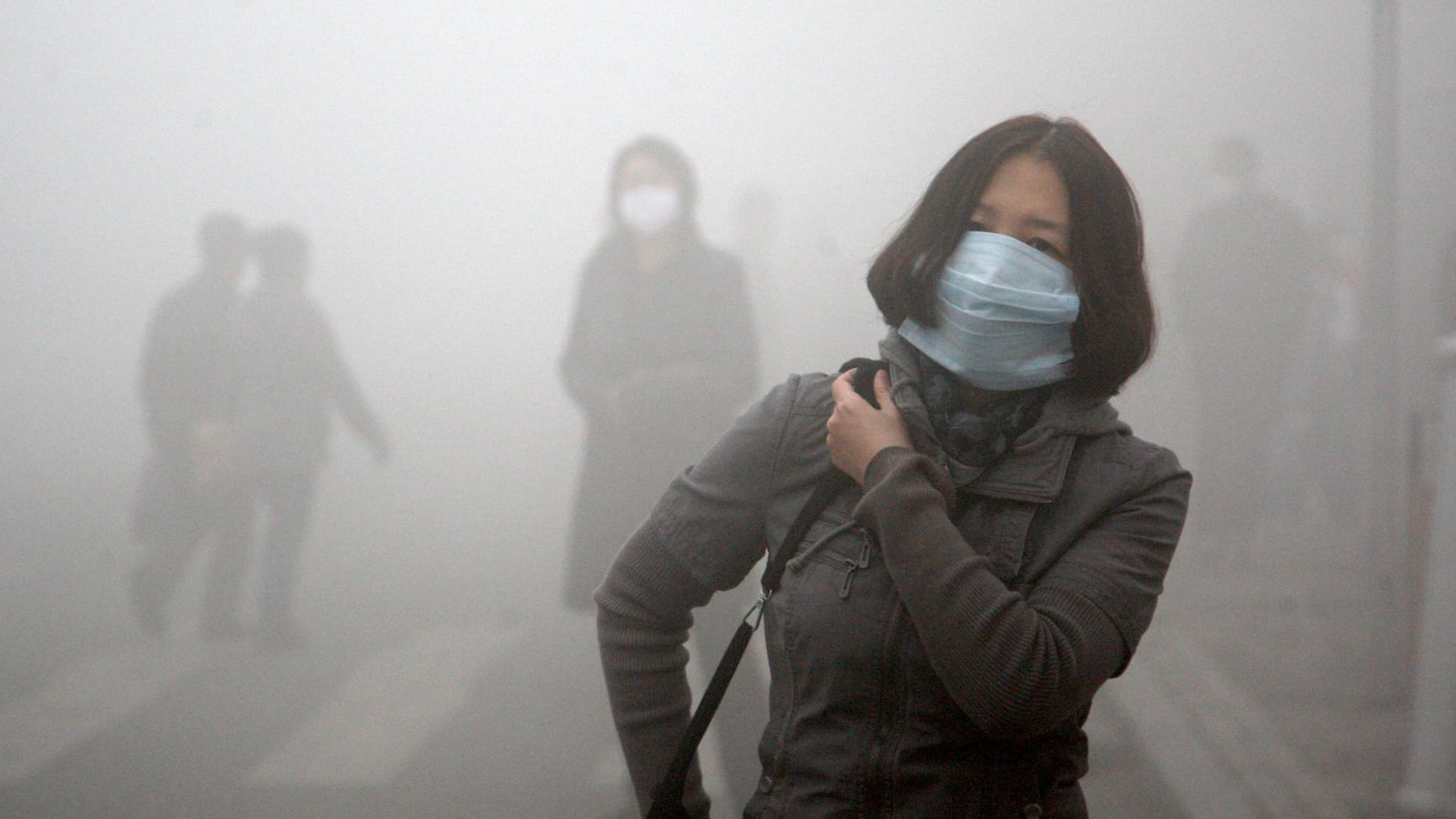Pope Francis And The Paradox Of A Globalized, Divided Church

Table of Contents
The Global Reach of the Catholic Church: A Double-Edged Sword
Globalization has undeniably impacted the Catholic Church, creating a double-edged sword. While increased connectivity offers immense potential for unity, it also exacerbates existing tensions and reveals deep-seated disagreements.
Increased Communication and Accessibility
Technology's role in connecting Catholics globally is undeniable. Social media platforms, websites, and live-streaming capabilities allow the Pope and Church leaders to communicate directly with followers across the world, fostering a sense of global community.
- Pope Francis's active presence on Twitter and other social media platforms allows for direct and immediate communication with millions.
- Live-streaming of papal masses and events allows for participation from anywhere in the world, fostering a sense of shared experience.
- Successful global initiatives, such as World Youth Day, rely heavily on technology for organization, communication, and participation.
Challenges of Cultural and Ideological Diversity
The very global reach of the Church highlights its inherent diversity. Differing cultural norms, liturgical practices, and interpretations of theological doctrines create potential for conflict.
- Disagreements surrounding issues like social justice, gender roles, and the role of women in the Church represent significant challenges to unity.
- Different cultural understandings of religious practice and authority can lead to misunderstandings and conflict. For example, varying perspectives on family planning and LGBTQ+ issues create significant internal debate.
- Examples of cultural clashes include differing views on the use of Latin in the Mass, the role of tradition versus modernity in liturgical practices, and varying approaches to ecumenism and interfaith dialogue.
Pope Francis's Efforts Towards Unity and Reform
Pope Francis has actively sought to address the divisions within the Church through a pastoral approach emphasizing inclusivity and mercy, while simultaneously facing resistance to his reform efforts.
Emphasis on Inclusivity and Mercy
A key aspect of Pope Francis's papacy is his emphasis on compassion and understanding. This is reflected in his policies and pronouncements.
- His approach to divorced and remarried Catholics is a significant example, emphasizing pastoral care and individual discernment.
- His encyclical Laudato Si' highlights the importance of environmental stewardship and social justice, urging a more inclusive and compassionate approach to global issues.
- Specific papal pronouncements like Amoris Laetitia and his focus on migrants and refugees reflect his emphasis on compassion and inclusion.
Challenges to Traditional Structures and Doctrines
Pope Francis's attempts at reform have faced significant resistance from more conservative factions within the Church.
- Some traditionalists oppose his more inclusive approach to certain theological and moral issues.
- Tensions exist between those who favor adherence to traditional doctrines and those who advocate for adaptation to modern contexts.
- Examples of conservative opposition include criticism of his approach to the Eucharist for divorced and remarried Catholics and his emphasis on dialogue with other faiths.
The Future of the Church: Navigating Globalization and Division
Navigating the complexities of a globalized and divided Church requires continued dialogue, reconciliation, and a commitment to interfaith understanding.
The Role of Interfaith Dialogue
Pope Francis has championed interfaith dialogue as a crucial tool for fostering mutual respect and peace.
- His numerous meetings and public statements emphasizing the shared values and common ground between different religions have fostered stronger relationships.
- His commitment to building bridges between Christianity and other faiths, particularly Islam, is a significant aspect of his papacy.
- Successful interfaith initiatives under Pope Francis include various meetings and joint declarations promoting peace and understanding.
The Need for Ongoing Dialogue and Reconciliation
Addressing the internal divisions within the Catholic Church requires continuous and open dialogue.
- Constructive conversations addressing differing theological viewpoints and cultural practices are essential for bridging the gap.
- Promoting mutual understanding and respect through open communication and a willingness to compromise is paramount.
- Potential strategies include fostering open forums for discussion, establishing mechanisms for conflict resolution, and promoting educational initiatives to increase theological and cultural literacy.
The Ongoing Journey of Pope Francis and a Globalized, Divided Church
In conclusion, Pope Francis and the Paradox of a Globalized, Divided Church highlights the inherent tension between the Church's global reach and its internal divisions. Pope Francis's leadership presents both significant opportunities for unity and substantial challenges in bridging the gap between diverse theological viewpoints and cultural practices. His emphasis on inclusivity, mercy, and interfaith dialogue offers a pathway towards greater unity. However, the journey is ongoing, and continued efforts are crucial. To delve deeper into this complex issue, we encourage you to research Pope Francis's major pronouncements, explore the work of Catholic scholars on globalization and the Church, and actively engage in respectful dialogue about the future of the Catholic Church. Let’s continue this conversation about Pope Francis and the Paradox of a Globalized, Divided Church.

Featured Posts
-
 Middle Managers Key Contributors To Company Productivity And Employee Satisfaction
Apr 24, 2025
Middle Managers Key Contributors To Company Productivity And Employee Satisfaction
Apr 24, 2025 -
 Canadian Dollars Mixed Performance Gains Against Us Dollar Losses Against Others
Apr 24, 2025
Canadian Dollars Mixed Performance Gains Against Us Dollar Losses Against Others
Apr 24, 2025 -
 The Impact Of Chinas Rare Earth Restrictions On Teslas Optimus Robot
Apr 24, 2025
The Impact Of Chinas Rare Earth Restrictions On Teslas Optimus Robot
Apr 24, 2025 -
 Teslas Q1 2024 Earnings Report A 71 Drop In Net Income
Apr 24, 2025
Teslas Q1 2024 Earnings Report A 71 Drop In Net Income
Apr 24, 2025 -
 Ella Travolta Kci Johna Travolte Ocarava Ljepotom
Apr 24, 2025
Ella Travolta Kci Johna Travolte Ocarava Ljepotom
Apr 24, 2025
